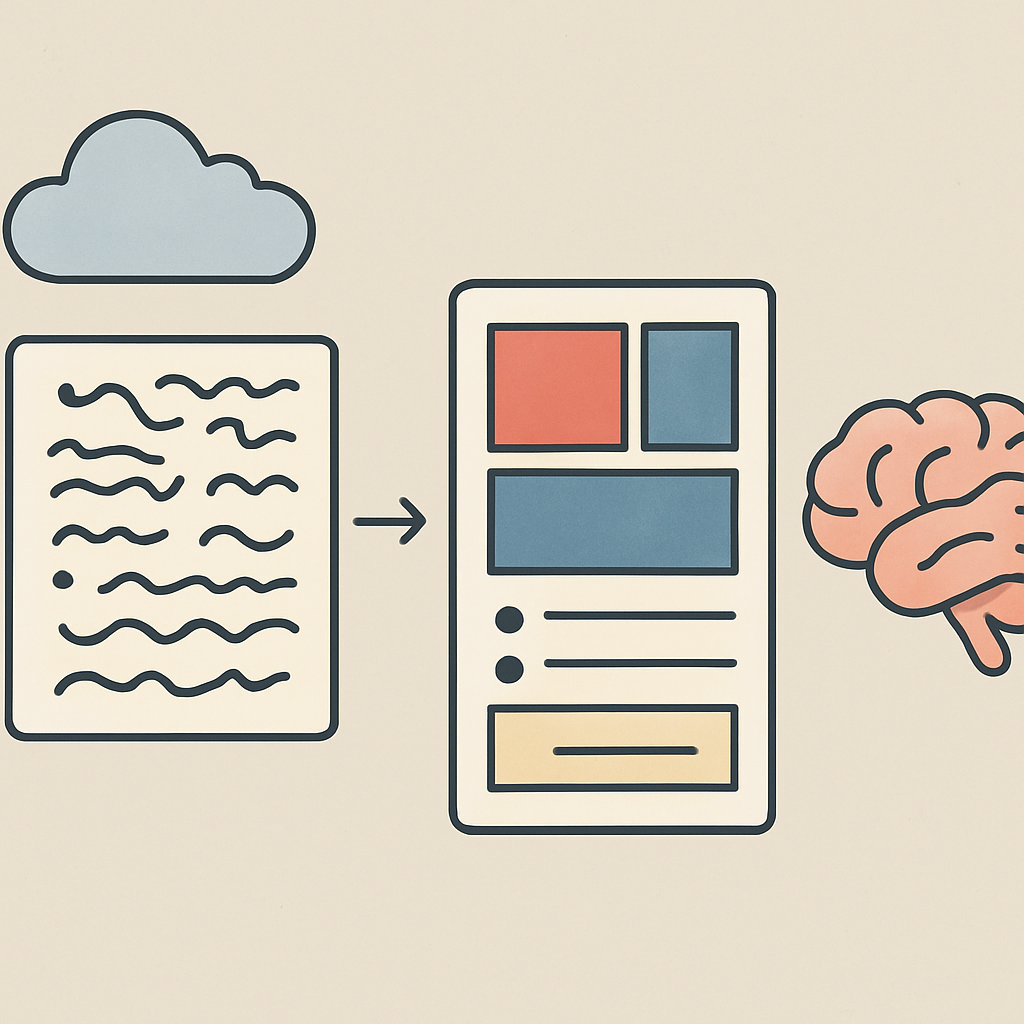Our brains are wired to crave order. Whether you’re rapidly scanning news feeds or tackling complex work tasks, chunked information—bite-sized, structured snippets—is easier to digest and remember. In today’s fast-paced digital world, understanding why our brains prefer chunked information can help us learn better, design smarter interfaces, and communicate more effectively.

What the Keyphrase Means
The focus keyphrase why our brains prefer chunked information appears here to highlight its importance. You’ll see it repeated naturally throughout the article and reinforced in key subheaders.
1. The Psychology: How Chunking Works
Chunking is the process of grouping individual elements into larger, meaningful units. It was first identified by psychologist George A. Miller in 1956, who found we can hold about 7±2 items in short-term memory—but more when information is chunked into patterns (e.g., phone numbers)¹.
How does this work neurologically? Neuroscientists explain that chunking reduces cognitive load. By organizing data into familiar units, the brain uses fewer mental resources, freeing up space for deeper thinking².
Why our brains prefer chunked information becomes clear: we process fewer cognitive ‘objects’ at once, making complex data manageable.
2. Real-World Examples
2.1 Learning & Memory
- Language acquisition: Flashcards rely on chunking—vocabulary grouped into thematic sets enhances recall.
- Skill mastery: Athletes and musicians practice in segments (e.g., drills, phrases), then recombine them.
2.2 User Experience & Design
Modern UX relies heavily on chunked structures:
- Onboarding flows with step-by-step visuals
- Dashboard cards breaking tasks or notifications into sections
As UI/UX expert Jakob Nielsen notes, chunked layouts reduce overwhelm and increase usability by guiding users through manageable tasks³.
2.3 Content Consumption
- Social media posts, email newsletters, and blogs thrive on bite‑sized headers, bullet points, and visuals.
- Longform content broken into sections keeps readers engaged.
All these are examples of why our brains prefer chunked information—users stay longer and remember more when information is broken down.
3. Emerging Trend: AI-Powered Chunking
The latest AI tools are capitalizing on our brain’s preference for structure.
- AI summarizers like OpenAI’s GPT and tools like Resoomer auto-generate bullet‑point synopses and “key takeaway” sections.
- Adaptive learning platforms (e.g., Duolingo, Coursera) monitor user progress and customize content flow—presenting smaller units until mastery is shown before moving on.
- Productivity tools (like Notion AI, Roam Research) transform paragraphs into clean, chunked outlines or task lists—helping users see structure without reorganizing themselves.
These tools embody the truth behind why our brains prefer chunked information, enhancing focus and retention.
4. Practical Benefits Across Domains
4.1 Better Learning Outcomes
Chunked study materials boost comprehension and recall. Education researchers have shown that spaced repetition of smaller units leads to better long-term retention⁴.
4.2 Improved Productivity
Task breakdown (e.g., Pomodoro technique, bullet journaling) helps avoid overwhelm and promotes progress through visible micro-goals.
4.3 More Effective Communication
Sales emails, reports, and presentations succeed when divided into concise sections—readers grasp key points faster and retain the message.
5. How to Use Chunking in Everyday Life
Here’s a practical guide to embracing chunking:
- Organize reading
- Break articles or chapters into clearly labeled sections.
- Add “key takeaways” at the end of each part.
- Style text for clarity
- Use headlines, subheaders, and lists.
- Keep paragraphs to 2–4 sentences max.
- Plan tasks smartly
- Divide big projects into 15–30 minute chunks.
- Calendar blocks or task manager fields work well.
- Design with chunking in mind
- Whether it’s slide decks or dashboards, separate information visually with headings, colors, or whitespace.
- Teach using chunking
- If lecturing or tutoring, chunk content into modules with quizzes or quick recaps after each unit.
These methods mirror everyday examples of why our brains prefer chunked information, and they’re easy to adopt immediately.
6. Future Outlook: Brain-Computer Interfaces & Personalized Chunking
Looking ahead, emerging technologies aim to tailor information delivery even more finely:
- Brain-computer interfaces (BCIs) could detect when learning saturation happens and trigger the next chunk only when ready.
- Wearables and attention tracking might optimize pacing—sending reminders or breaking content when fatigue sets in.
The next frontier lies in technology that adapts in real-time to our cognitive capacity, truly respecting why our brains prefer chunked information at the neural level.
7. Summary of Benefits
- Frees mental bandwidth for deeper thinking
- Boosts recall by enabling efficient memory encoding
- Enhances focus through bite-sized progress
- Improves usability in digital tools and content
- Supports effective teaching and learning strategies
References
George A. Miller’s foundational work on memory capacity and chunking:
Miller, G. A. (1956). The magical number seven, plus or minus two: Some limits on our capacity for processing information. Psychological Review.
https://en.wikipedia.org/wiki/The_Magical_Number_Seven%2C_Plus_or_Minus_Two
Yu, Q. et al. (2016). Chunking improves symbolic sequence processing and relies on reduced cognitive workload. PLoS ONE. https://www.ncbi.nlm.nih.gov/pmc/articles/PMC4755266/
Overview of chunking as a memory-enhancement technique:
Verywell Mind (2005). How Chunking Pieces of Information Can Improve Memory. https://www.verywellmind.com/chunking-how-can-this-technique-improve-your-memory-2794969





